What's New
Displaying results 1551 - 1560 of 4924
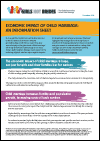
Resource | Fact Sheets,
In June 2017, the World Bank and the International Center for Research on Women released groundbreaking results from a major three-year research study on the global costs of child marriage. The study found that child marriage is not only a human rights violation having a major impact on the wellbeing of girls, it also has major negative impacts for households and national economies. This brief highlights key messages from the study that are important for helping policymakers, finance ministers and governments to understand how ending child marriage can save money and alleviate poverty.
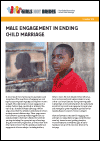
Resource | Fact Sheets,
In recent years, there has been growing evidence and recognition of the importance of engaging men and boys to improve gender equality and empower women and girls. The evidence base on male engagement in ending child marriage, specifically, is relatively thin, with only a handful of studies assessing whether programmes shift the attitudes and behaviours of men and boys around child marriage. Those programmes that have been rigorously studied suggest that it is indeed possible to shift boys’ attitudes toward child marriage including the appropriate age of marriage for girls.
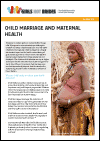
Resource | Fact Sheets,
Every year 12 million girls are married before the age of 18. If progress is not accelerated, 150 million girls could be married in childhood by 2030.1 As a key driver of adolescent pregnancy, child marriage has a hugely detrimental impact on the health and wellbeing of girls and young women, who are more susceptible to experiencing complications during pregnancy and childbirth. The children of child brides are also at higher risk of poor health outcomes than children of girls who marry later. If we act to prevent child marriage now, we could dramatically improve health outcomes for millions of girls and women worldwide, and those of their children.
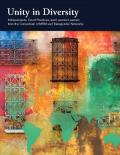
Resource | Publications,
This case study is about the Consortium of MSM and Transgender Networks (the Consortium), a groundbreaking collaboration of global and regional networks by and for men who have sex with men (MSM) and transgender people. It describes the Consortium’s achievements, good practices and lessons learned, with a focus on its most recent work.
The case study is framed around eight key achievements from the Consortium’s action on HIV, sexual health and human rights. Each one is illustrated by examples of the work of members. All of the examples are inter-dependent – with the efforts of one or more networks not possible without the backing of other members and the Consortium as a whole. The examples also highlight critical issues about coordinating a large and effective Consortium. This includes the importance of having agreed principles, transparency, consistent communication, strong financial and programmatic management, and skilled group facilitation, especially during tough decision-making.
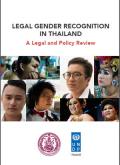
Resource | Tools,
The rights to self-determination and recognition before the law are fundamental human rights belonging to everyone without distinction including transgender people. However, the human rights of transgender people in this regard continue to be violated and disrespected across the world, in the Asian region and within Thailand itself. This report, Legal Gender Recognition in Thailand: A Legal and Policy Review has captured and explored the small number of laws, regulations and policies in Thailand that include transgender people within their scope and which may be relevant to legal gender recognition.
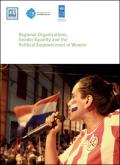
Resource | Publications,
Gender equality and the political empowerment of women are key elements for the consolidation of sustainable democracies worldwide.
Global and regional organizations play an important role in the development of legal and policy frameworks, as well as in the design of effective action plans to better support the advancement of the gender equality agenda at the global, regional and national levels.
This report presents key instruments for promoting gender equality and political empowerment of women that are currently in place at the global and regional levels, highlighting the challenges, opportunities and successes that each organization has encounter in the implementation within their respective regions.
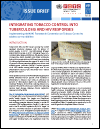
Resource | Fact Sheets,
The Global Fund to Fight AIDS, TB and Malaria has opened up the opportunity to incorporate tobacco control into TB and HIV grants. In line with the 2030 Agenda, the UNDP Strategic Plan 2018-2021, and UNDP’s HIV, Health and Development Strategy 2016-21: Connecting the Dots, UNDP and the Secretariat of the WHO Framework Convention on Tobacco Control (WHO FCTC) have produced this Issue Brief to inform Global Fund applicants on integrating tobacco cessation into Global Fund HIV and TB grants. The Issue Brief outlines how tobacco consumption worsens TB and HIV outcomes and how the integration of tobacco control could increase health benefits and efficiencies. Key approaches and practical options for such integration are outlined, based on a review of research and case studies.
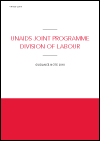
Resource | Guidelines,
The Joint United Nations Programme on HIV/AIDS (UNAIDS) leads and inspires the world to achieve its shared vision of zero new HIV infections, zero discrimination and zero AIDSrelated deaths and to end the AIDS epidemic as a public health threat as a contribution to achieving the Sustainable Development Goals. A champion and forerunner of United Nations reform, UNAIDS unites the efforts of 11 United Nations Cosponsors—UNHCR, UNICEF, WFP, UNDP, UNFPA, UNODC, UN Women, ILO, UNESCO, WHO and the World Bank—and the UNAIDS Secretariat. The achievement of sustainable results for people is at the centre of the Joint Programme’s operations at all levels.
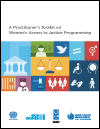
Resource | Tools,
This practitioners Toolkit on Women’s Access to Justice, developed by UNDP, UN Women, UNODC, and OHCHR provides evidence-based guidance for a coherent and consistent policy and programming approach to overcoming these obstacles. This guidance will help to ensure UN system coordinated responses when addressing legal and justice challenges that women face within the context areas of marriage, family, and property rights; ending violence against women; and women in conflict with the law. Designed primarily for staff of the UN system, the toolkit presents a menu of options for scaling-up work and responding to current deficits in women’s access to justice programming and the growing demand for technical assistance in this area. This toolkit consolidates and complements existing resources and aims at enhancing the impact of UN support by stimulating bolder gender-responsive justice interventions for the full realization of the rights of women and girls.
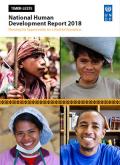
Resource | Publications,
Timor-Leste’s 4th National Human Development Report responds to the development aspirations of the youth of Timor-Leste, the drivers of the nation’s future development. The report examines well-being and identifies options for seizing the demographic dividend, an issue that profoundly influences human potential and sustainable development.





